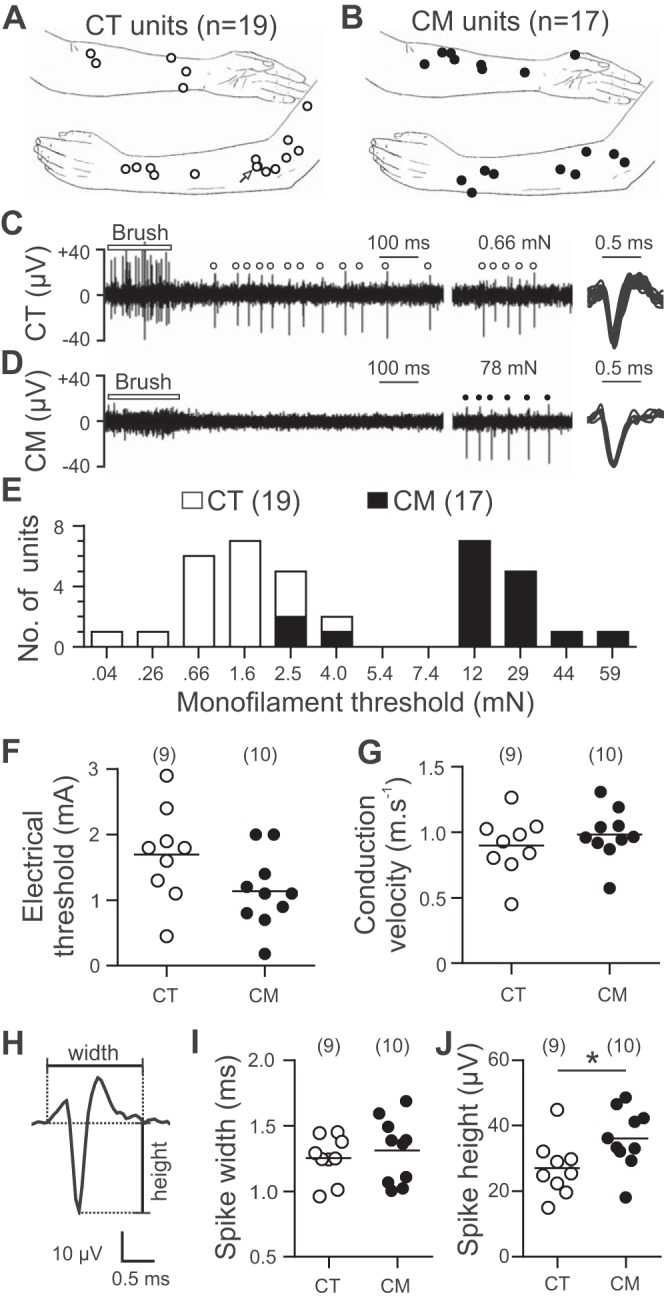Fig. 1.

Physiological properties of CM and CT afferents. A and B: indicators of receptive field locations of CT (A) and CM (B) units on the arm. Arrow indicates 2 CT units with overlapping receptive field locations. C and D: responses to brushing and suprathreshold indentation from a CT (monofilament threshold 0.04 mN) (C) and a CM (monofilament threshold 12 mN) (D) and overlaid spikes from all displayed responses. Spike times are marked above the trace. Multiunit discharges occurred in myelinated afferents during the brush stimulation (C and D), with a long-latency response in the CT unit, with a typical afterdischarge outlasting the stimulus (C), and no response in the CM unit (D). E: a bimodal distribution of monofilament thresholds was seen, but with some overlap between CTs and CMs. F and G: intracutaneous electrical thresholds (F) and conduction velocities (G) were not significantly different between CTs and CMs. H: spike shape measurements. I and J: there was no significant difference between CT and CM spike widths (I), but spike amplitude was significantly smaller in CTs (J; *P < 0.05).
